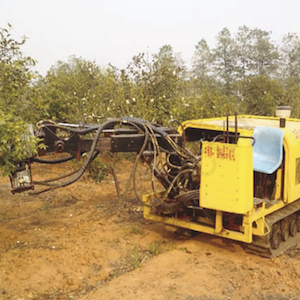Fuzzy neural network PID control design of camellia fruit vibration picking manipulator

All claims expressed in this article are solely those of the authors and do not necessarily represent those of their affiliated organizations, or those of the publisher, the editors and the reviewers. Any product that may be evaluated in this article or claim that may be made by its manufacturer is not guaranteed or endorsed by the publisher.
Authors
Due to the growth characteristics of the flowers and fruits of camellia in the same period, the vibrating camellia fruit picking machine needs to ensure the constant rotational speed of the vibrating hydraulic motor when the picking mechanism is operating, to achieve a constant vibration frequency, to ensure that the camellia fruit can smoothly fall off the branches through vibration. In contrast, the camellia fruit does not fall off. In this regard, this paper deduced the state space equation of the camellia fruit picking machine’s valve-controlled vibrating hydraulic motor system and designed a fuzzy wavelet neural network PID controller (FWNN PID controller) based on the traditional incremental PID control principle. Then the designed vibration picking manipulator control system was simulated under no-load, 5 s load conditions, and load start conditions with MATLAB/Simulink, a general PID controller and a fuzzy RBF neural network PID controller (FRBFNN PID controller) were used to contrast with it. The results show that the general PID controller has a slow response speed and poor robustness, while fuzzy neural network PID controllers (including FWNN PID controller and FRBFNN PID controller) have a fast response speed and strong robustness, which can well meet the requirements of a specific vibration frequency. Finally, a field test was carried out. The results show that the FWNN PID control is better than the FRBFNN PID control. Furthermore, the FWNN PID controller obviously reduced the drop rate of camellia flowers within 6% while ensuring the picking efficiency above 90%, which can well meet the needs of the camellia fruit picking operation.
How to Cite

This work is licensed under a Creative Commons Attribution-NonCommercial 4.0 International License.














